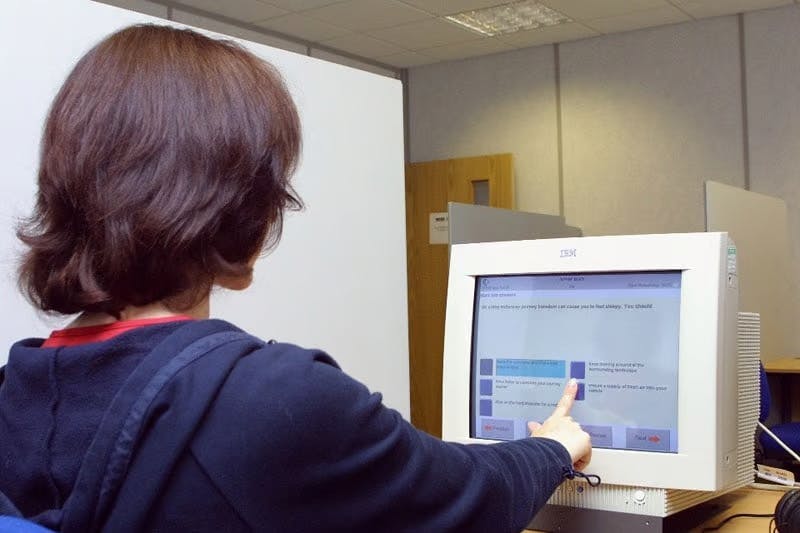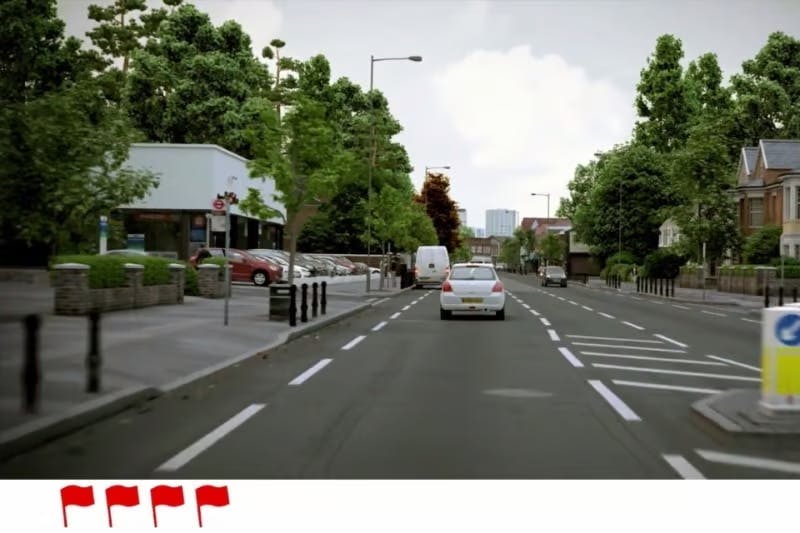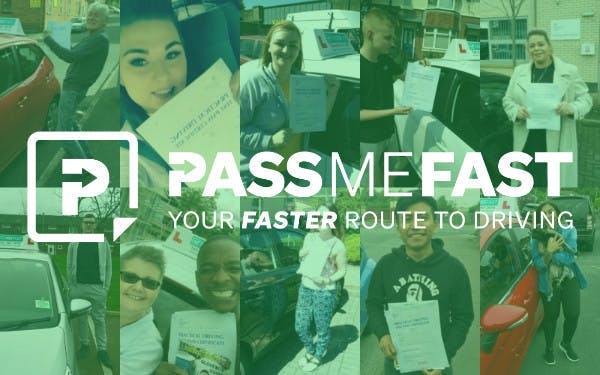How Many Hours of Revision Are Needed to Pass the Theory Test?
April 11, 2024
•9 min read
Leon McKenzie
Content Writer

Getting out onto the roads and enjoying the freedom that driving brings is something that many learners yearn for. Before they can even hope to take the driving test, however, learner drivers must first ace the theory test. Though often classed as "common sense" by some, the theory test is renowned for catching quite a few learners off guard every year. A popular question that circulates the learner community then, is, just how many hours of revision for the theory test are needed to pass first time?
In this guide, we’ll look at how many hours we’d advise learners spend revising the theory test before taking a stab at it. We’ll also look at how you should go about structuring your revision and offer some tips to help you make the most of your time before your big day.
Revising for the theory test
A much-contested topic for many learner drivers revolves around how many hours of revision for the theory test are needed to pass. You’ll have undoubtedly been told by your nearest and dearest friend that the theory test is a walk in the park—you don’t even have to crack open a book, the answers are just so obvious. Now, it’s absolutely vital that you don’t fall prey to these theory test myths. After all, if you fail your theory test, you’re only going to have to go back to the drawing board and start all over again.
Think back to any of the other tests you’ve had to take in the past. It’s doubtful that you managed to completely ace them without having to do any revision whatsoever. The best way to prepare for any test is to make time for some solid revision. Rome wasn’t built in a day—the same applies for your theory knowledge. You can’t expect to spend a few minutes flicking through a book and somehow pass with full marks. Don’t believe us? Well, do you know how to calculate stopping distances off the top of your head? What about the percentage of emissions that road transport accounts for?
Whilst we’d love to tell you that the theory test is easy peasy, that’s only the case if you’ve actually put in the effort with revision. Look at it this way—you’re spending over 50 hours learning how to drive for the practical test. Don’t you think, then, that you should be putting in some serious hours to nail the theoretical side of driving? The safest drivers on the roads are the ones with a good theoretical foundation to work off.
Start with the Highway Code, which provides vital road information and rules. We advise buying resources like the official DVSA handbook or the AA theory test book. They both contain official DVSA questions with answers. Revise them thoroughly—they could show up on your test.
The theory test has made drivers safer in recent years, so it's important you give it the attention its due. Let’s take a look at how much time you should be putting in below…
How many hours of revision for the theory test are needed?

Unlike with driving lessons, there’s no real golden rule for how many hours of revision for the theory test you need before you take the plunge. Some learners master the theory test in no time at all—devouring books and acing practice tests in only a few hours. Other learners, however, end up needing much longer to get to grips with the material. This is especially true if you have a condition, like dyslexia, that makes learning a bit more difficult.
We recommend that learner drivers spend at least 10 hours revising for the theory test. Unlike our intensive approach to driving, however, we take a more casual approach to revising for the theory test. We’ve found that it’s much more beneficial for learners to stretch this time out over several days, e.g., spending an hour or two a day reading DVSA revision guides and taking practice tests. Of course, 10 hours is the bare minimum. If you feel like you’d benefit from more time, or you’d like to limit the chances of having to go back in for a second attempt, somewhere in the 15 to 20 hour margin might be better.
The number of hours you spend revising the theory test will vary depending on factors like the following:
- Confidence with the material: if you’re finding it easy enough to remember everything from revision guides and tests, you might not need to spend as long revising. Of course, don’t mistake false confidence for actual understanding.
- Learning style: if you know for a fact that you tend to take longer to retain information, then you shouldn’t be putting off revising or limiting yourself to only a few hours. Remember, if you fail, you’ll have to go through all of this fuss again.
- Driving lessons: some learners revise the theory test alongside their driving lessons. This can actually benefit some learners—helping them solidify theoretical knowledge by applying it practically in lessons.
- Dedication: if you’re prepared to actually spend solid time revising, e.g., when you say an hour, you actually spend an hour revising, then you won’t need as long on a whole. If, however, you’re procrastinating at every turn, you’ll end up needing more time.
Think we’re going a bit overboard? Let’s take a quick look at what you’ll have to tackle in order to pass the theory test...
The theory test format
The theory test is made up of two separate sections: multiple-choice and hazard perception. Now, you have to pass both sections in order to pass the entire theory test. This means that you can’t just assume that your strength with one section will pull you through. An understanding of both sections is absolutely vital.

Multiple choice
This section will last 57 minutes, and you will have to get 43 out of 50 questions correct in order to pass. The questions will be based on the following topics:
- Alertness
- Attitude
- Essential documents
- Hazard awareness
- Incidents, accidents and emergencies
- Motorway driving
- Other types of vehicle
- Road and traffic signs
- Road conditions and vehicle handling
- Rules of the road
- Safety and your vehicle
- Safety margins
- Vehicle loading
- Vulnerable road users
With over 1,000 multiple-choice questions in the DVSA’s question bank so far, it’s safe to say that a few solid hours of revision for the theory test might be needed before you’re confident enough to tackle them all with relative ease. You can revise this section by reading up on the DVSA’s recommended revision materials, revising with a theory test app or trying your luck at practice tests.
Hazard perception

This section will involve you watching 14 one-minute clips which contain developing hazards, e.g., a driver emerging from a junction too quickly or a cyclist swerving in front of you.
When you see a hazard developing, you need to click your mouse. Hazards are worth 5 points and the sooner you spot them, the more points you’ll get. Don’t expect random clicking to help you breeze through this section. If the software thinks you’re cheating, it will automatically fail you. You will need to score at least 44 out of 75 to pass this section. To get more help on this subject, read up on our hazard perception dos and don'ts.
Though it might not seem like it, the information you learn when revising the theory test will help you become a safe and confident driver. Once you’ve got a solid theoretical foundation laid out, you’ll be able to apply it to your driving—from adjusting your speed to match changes in weather to knowing what to do in the event of a car accident.
Where do I start with theory test revision?

If you’ve already had a look into theory test revision, you’ll undoubtedly be aware of just how many resources are available online. If you’re at a complete and utter loss as to where to begin, however, we’ve got just the thing for you! Our theory test revision resources guide contains everything you could possibly need to pass the theory test. You’ll find links to resources recommended by the DVSA, quizzes, mock tests and hazard perception clips. We’ve also included our top 5 choices for theory test revision apps—perfect for those looking to revise on the go.
We’d recommend making your way through our resources guide with the time you have available—it will help you prepare for what’s ahead in the theory test. You might also find it useful to read up on our guide to how to pass your theory test.
How should I structure my revision?
Okay, so we’ve already established that you will need around 10 to 20 hours of revision for the theory test. You’ll have to decide on the exact number yourself—looking at how much time you have on your hands and how well you retain information. Beyond that, however, you might be wondering how this revision should be structured.
Despite what your friends tell you, spending 5+ hours revising the day before your test will not help you. Trust us—it will burn you out and lead to a few too many tears being shed. Instead, you should break it down into 1 to 2 hour slots every day—or, every other day, if your test date is a couple of weeks away. As long as you manage your time effectively enough, you can easily break down 15-20 hours of revision across your schedule, even if you’re working full time or have a busy social calendar.
Now, it’s not just about making sure you have the time to revise, you also need to ensure you’re dividing up your time evenly—for both multiple choice and hazard perception. You'll find it especially useful to work your way through our resources guide step-by-step. Speaking of revision, check out some of our top tips below!
Top theory test revision tips

Book your test
Before you get into the nitty gritty of revising for your theory test, you first need to actually book a theory test. There’s no use in revising and mastering all of that knowledge if you end up booking your test last minute for a slot that’s months away. Instead, try to pick a date that’s at least a couple of weeks away. This will give you plenty of time to get in that 10-20 hours of theory test revision.
Know the structure
The reason many learner drivers drop the ball with the theory test is because they’re not actually familiar with how the test is structured. We’ve lost count of how many learners end up completely stumped by the hazard perception section. It’s as simple as looking over our theory test resources and making your way through the practice tests available.
Figure out your preferred revision style
Do you learn best by copying out passages over and over again? Then get yourself a DVSA revision guide and start writing! Prefer a more interactive approach? Try out the quizzes in our resources guide. Alternatively, get your family and friends to ask you questions from practice tests. Find out which method works for you and practice, practice, practice!
Revise on the go
You should never let any time go to waste when revising for the theory test. That’s why we recommend learners revise on the go. It’s as simple as downloading one of our recommended apps and testing your skills on your daily commute. Alternatively, fit in a quick mock test during your dinner break. Time is precious when it comes to revision—waste not, want not!
Put in the hours
If you’ve decided to revise for an hour every day, make sure you stick to it. We’ve all been there before—making any excuse we can just to avoid having to buckle down and actually revise. What you’ve got to remember, however, is that if you don’t put in the hours, it’s likely that you’ll fail. If that happens, you’ll have to put in even more time for your next attempt. So, put away the distractions and put in the work! Practice makes perfect after all!
Think about it during your driving lessons
If you’re taking driving lessons at the same time as revising for your theory test, it could prove to be very beneficial. Why? Hazard perception can become almost second nature once you’ve been out driving on the roads for at least a few hours. Plus, it gives you a real-life understanding of how these situations can arise.
Figure out your strengths and weaknesses
After you’ve spent 5+ hours revising for the theory test, you’ll probably be able to guess which areas you’re strongest and weakest in. If, for example, you’re a pro at hazard perception, you can then dedicate more of your time to the multiple-choice section. Many of the top revision sites in our guide actually shelve the questions you get wrong into a separate question bank just so you can challenge yourself!
Prepare yourself for your big day
It’s important that you get a good night’s sleep the night before your theory test. That way you’ll be bright-eyed and bushy-tailed, ready for whatever challenges await. Make sure you remember to bring your provisional licence, otherwise you won’t be able to take your theory test. If you’re feeling nervous, you can check out our guide on how to avoid test day nerves.
Subscribe for driving advice, offers & more
We'd love to let you know about our courses, news and offers via email. You may unsubscribe at any time.
Star Genie Limited trading as PassMeFast. Company number 10093359
Copyright © 2024 owned by Star Genie Limited
PassMeFast, Blue Tower, MediaCityUK, Salford, M50 2ST
